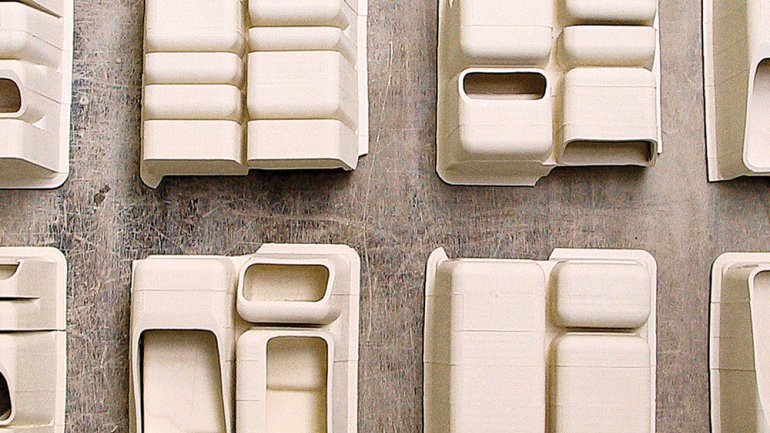The Speculative and the Immediate
The Speculative and the Immediate
An Architect Addresses Craft
Although I drifted toward architecture for many reasons, one of the defining qualities that attracted me was projective thinking. Architects value the model of a building less for what it is than what it points to - what it projects into the future. Of course, projective thinking is an important quality for a discipline charged with envisioning possibilities for habitation because it can overlook current conditions in favor of a potential future.
Architects use objects as surrogates, as stand-ins for designs that will be realized at some later point. We employ models to represent designs that have already been finalized, although not yet realized. This understanding ignores any inherent qualities that material might contain at object scale. Model-building materials tend to be monochromatic and homogenous, most valued for their lack of material qualities.
Moreover, architects often think of craft as an act of execution-follow-through on a given proposal. However, I believe that craft can also indicate a negotiation with material and process. With this sensibility, material becomes a generator of form rather than a way simply to manifest or to render predetermined ideas of form. Craft becomes synonymous with discovery as much as mastery. I hope that exploring this latter definition of craft and coupling it with projective thinking will yield an architecture that grows out of the specificity of the world while moving beyond its constraints.
Three years ago, in the basement of a community college, I discovered the material tradition I had been searching for: ceramics. The material immediacy of the ceramic process has allowed me to explore this alternate understanding of craft as discovery. Its inherent limitations of scale forced an immediate focus on object scale. The time-intensive nature of the process guaranteed that these objects could not simply be models for future designs. The time, care and precision involved demand that they be viewed as projects unto themselves, independent of some future potential. Governed by the inflexible parameters of the material and the drying and firing processes codified over the centuries, the ceramic medium seems to allow little room for innovation. However, technology can operate as a wedge to reformulate these given equations, radicalizing the existing deep intelligence of traditional processes of making.
After two years of skill-building through various forays into slip-casting technique that resulted in my In Foam Falls Function series, I journeyed to the Netherlands for a residency at the European Ceramic Workcentre (.ekwc). The .ekwc is a mecca for artists and architects who wish to experiment with the ceramic process but lack formal training in this field. The Workcentre is staffed with expert technicians who help strategize and negotiate the peculiarities of this material. They view the center as a giant laboratory for experimentation, so it was the perfect place for me to test my interests in new technologies and issues of scale. It was there that I completed my Up-Scaling and Tectonic Horizons series.
In these three series of ceramic investigations I consider how craft can inform architecture (and vice versa) while attempting to maintain a foothold in the realms of both the immediate and the projective.
In Foam Falls Function started as a way for me to examine found objects and test the possibilities of recasting these objects in new materiality. These forms, foam and polystyrene packaging inserts, reference the precise void created by the discrepancy between products and their containers. They are ubiquitous yet intensely complex objects whose beauty is often overlooked because of their non-precious substance.
Through material translation, I explore how the negative space within these forms holds potential as habitable space at the scale of the object as well as that of architecture. Since I initially view these casts as objects, not models, the material and fabrication processes are free to inject their own language of form into the pieces without concern for future architectural implications. I interpret "imperfections" such as drip marks and casting seams as registrations of sophisticated material process rather than problematic blemishes. I then later use documentation and presentation to read potential into these new layers of texture, form and space.
Tectonic Horizons extends my investigation into the potential for digital fabrication to affect methods of production and inform larger scales of architectural space and landscape. Rather than using a physical model or pattern to cast plaster molds, I generated these forms solely as virtual models whose negative form is then directly milled into plaster blanks, eliminating the analog process of mold-making. The absence of a "real" physical form means there is literally no model of perfection to work toward, no obligation for fabrication to live up to the original. Instead, processes like that of the Computer Numerically Controlled (cnc) router can have a stronger voice in the form of the final object. This interlocking system of slip-cast ceramic modules takes advantage of the texture created by the cnc machining process to channel exterior surface toward intricate interior spaces.

